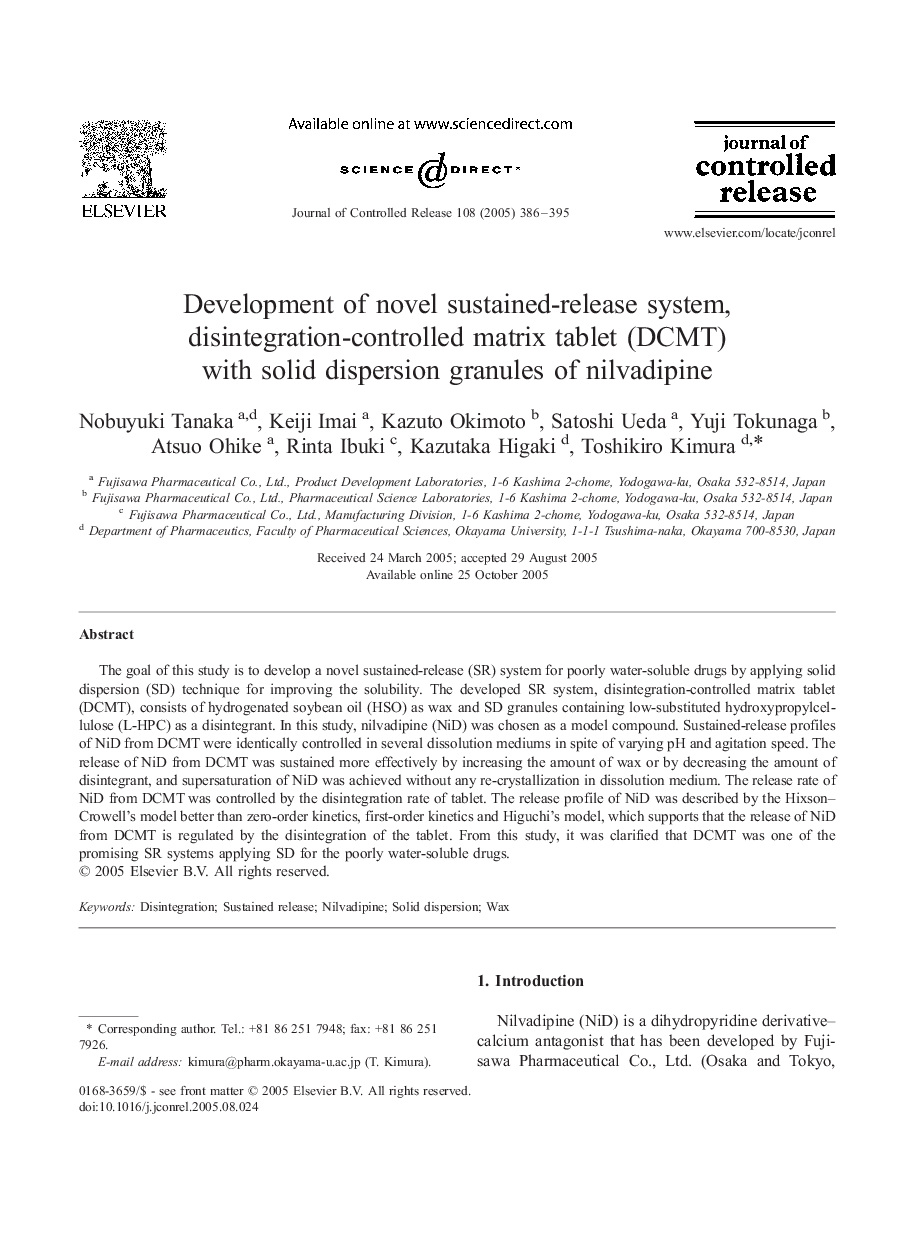| Article ID | Journal | Published Year | Pages | File Type |
|---|---|---|---|---|
| 9774626 | Journal of Controlled Release | 2005 | 10 Pages |
Abstract
The goal of this study is to develop a novel sustained-release (SR) system for poorly water-soluble drugs by applying solid dispersion (SD) technique for improving the solubility. The developed SR system, disintegration-controlled matrix tablet (DCMT), consists of hydrogenated soybean oil (HSO) as wax and SD granules containing low-substituted hydroxypropylcellulose (L-HPC) as a disintegrant. In this study, nilvadipine (NiD) was chosen as a model compound. Sustained-release profiles of NiD from DCMT were identically controlled in several dissolution mediums in spite of varying pH and agitation speed. The release of NiD from DCMT was sustained more effectively by increasing the amount of wax or by decreasing the amount of disintegrant, and supersaturation of NiD was achieved without any re-crystallization in dissolution medium. The release rate of NiD from DCMT was controlled by the disintegration rate of tablet. The release profile of NiD was described by the Hixson-Crowell's model better than zero-order kinetics, first-order kinetics and Higuchi's model, which supports that the release of NiD from DCMT is regulated by the disintegration of the tablet. From this study, it was clarified that DCMT was one of the promising SR systems applying SD for the poorly water-soluble drugs.
Related Topics
Physical Sciences and Engineering
Materials Science
Biomaterials
Authors
Nobuyuki Tanaka, Keiji Imai, Kazuto Okimoto, Satoshi Ueda, Yuji Tokunaga, Atsuo Ohike, Rinta Ibuki, Kazutaka Higaki, Toshikiro Kimura,
